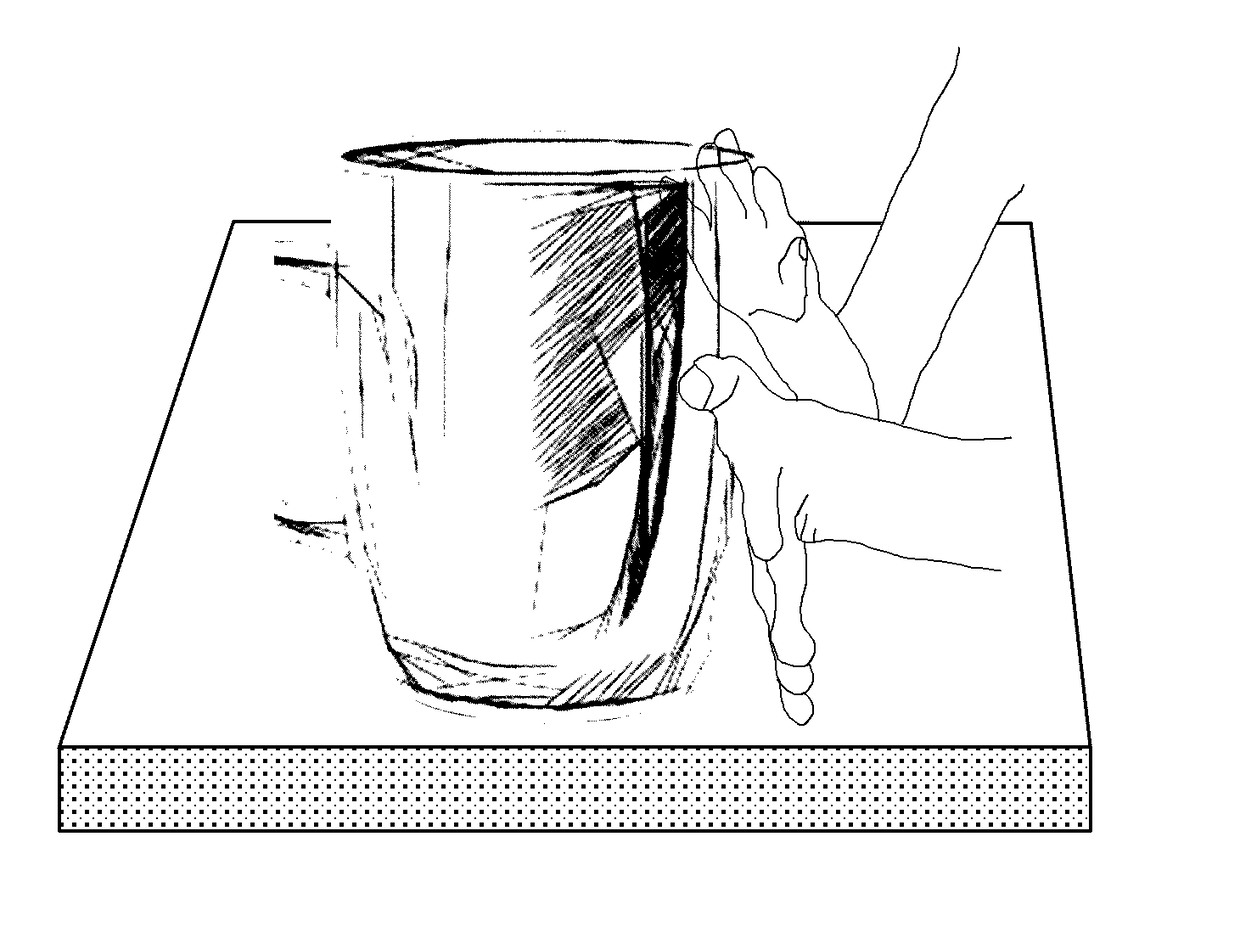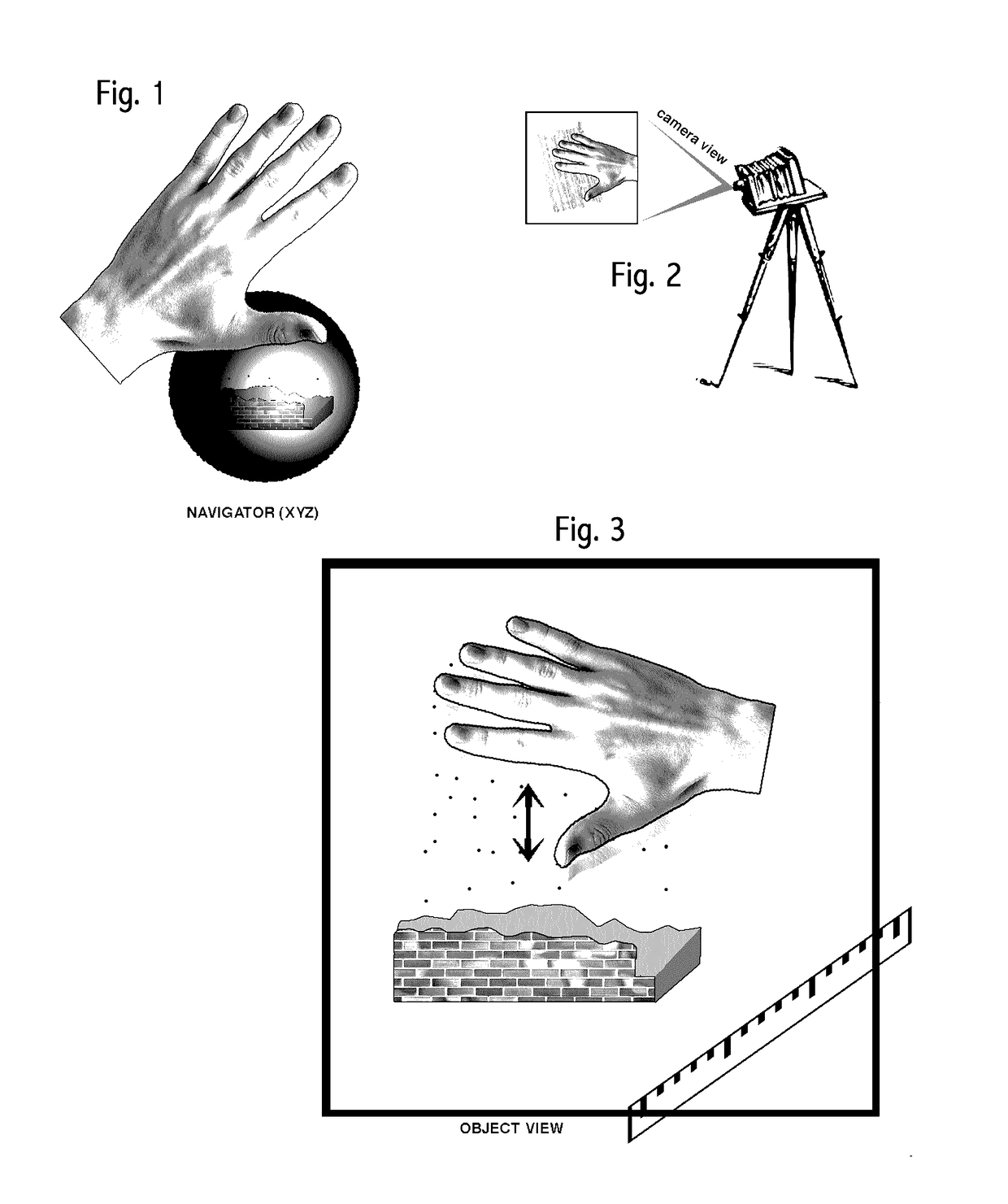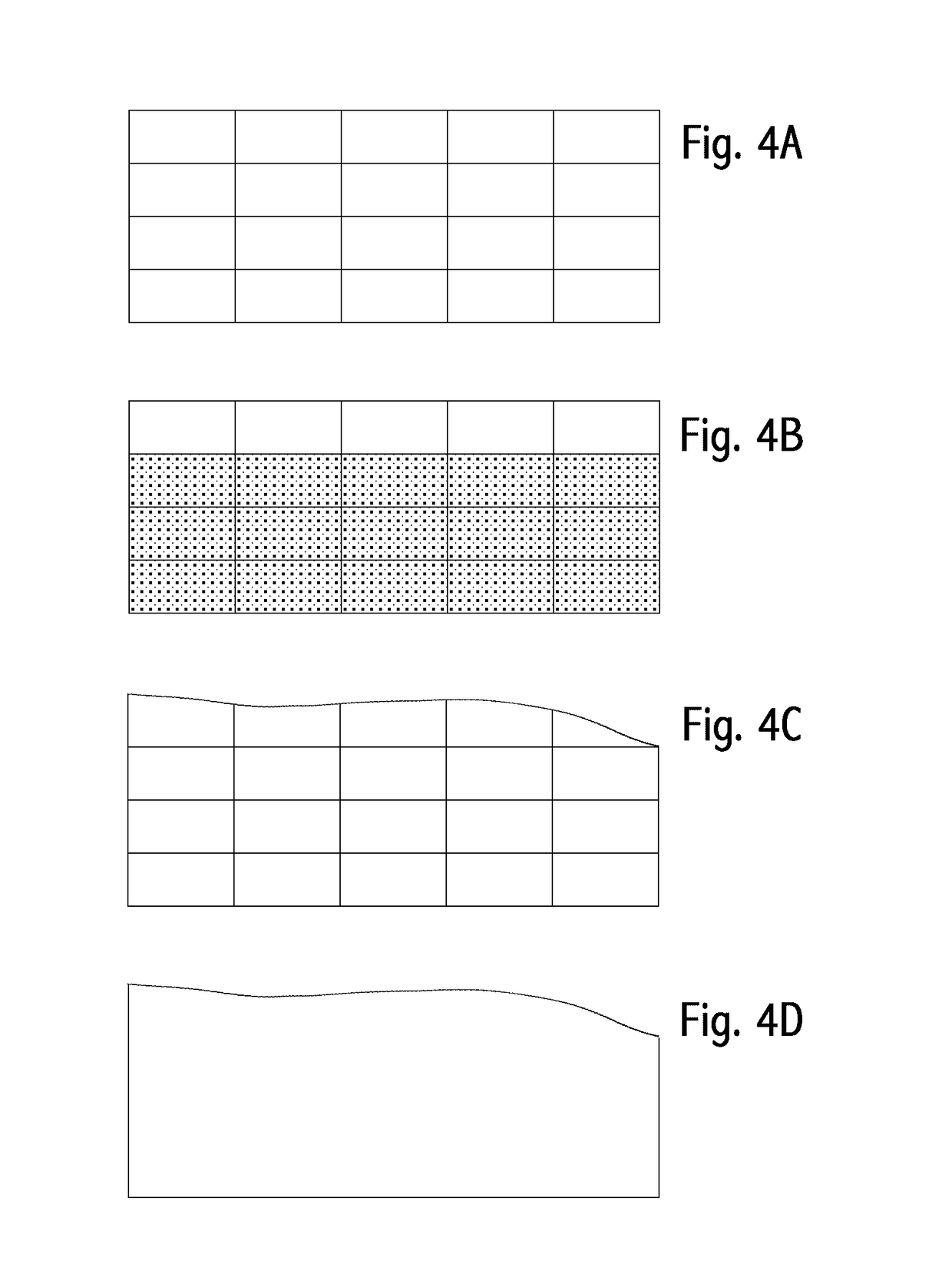Three-dimensional computer-aided-design system user interface
a computer-aided design and user interface technology, applied in the field of 3d cad systems, can solve the problems of high learning curve, slow usage, and use of mono-functional buttons and fill-in-the-blank fields
- Summary
- Abstract
- Description
- Claims
- Application Information
AI Technical Summary
Benefits of technology
Problems solved by technology
Method used
Image
Examples
Embodiment Construction
[0071]The 3D CAD system environment includes what is sometimes called a Virtual Reality (VR) development environment.
[0072]Methodology for implementing maps from hand gestures and poses to 3D CAD system actions or commands is not hard. The most current 3D CAD system commands are listed starting with the most common. Experienced 3D CAD system users are then asked what hand gestures and poses they think best represent those commands. Consensus or majority choices are then used in an initial mapping.
[0073]Similarly, people experienced in gestures, such as either experienced or new users of American Sign Language (ASL) are asked what they think the 500 most common words and letters should do in a 3D CAD system. Consensus or majority choices are then also used in an initial mapping.
[0074]In this way, the proposed mapping is approached “from both ends.”
[0075]Beta users then validate and modify this initial mapping. The beta users set should include both experienced and new uses of 3D CAD ...
PUM
 Login to View More
Login to View More Abstract
Description
Claims
Application Information
 Login to View More
Login to View More - R&D
- Intellectual Property
- Life Sciences
- Materials
- Tech Scout
- Unparalleled Data Quality
- Higher Quality Content
- 60% Fewer Hallucinations
Browse by: Latest US Patents, China's latest patents, Technical Efficacy Thesaurus, Application Domain, Technology Topic, Popular Technical Reports.
© 2025 PatSnap. All rights reserved.Legal|Privacy policy|Modern Slavery Act Transparency Statement|Sitemap|About US| Contact US: help@patsnap.com



